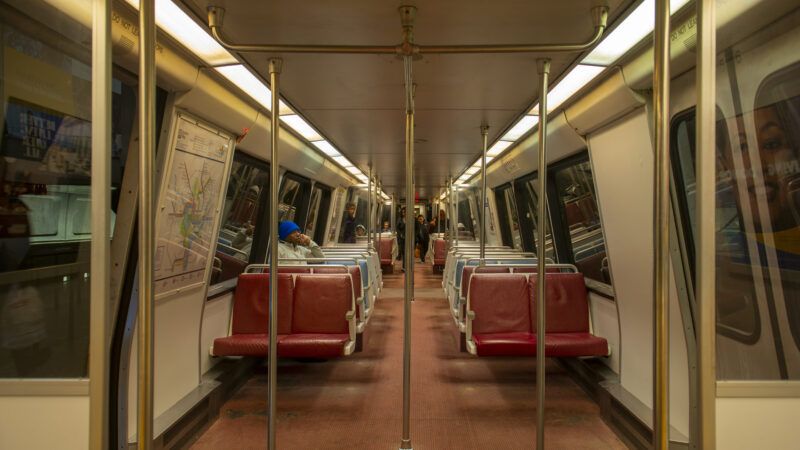Derailment Investigation Leads D.C. Metro To Pull 60 Percent of Its Rail Cars From Service
D.C. transit officials have known since 2017 about a safety defect in its 7000 series cars that caused a derailment last week.

The supposed turnaround of the Washington Metropolitan Area Transit Authority's (WMATA) Metro rail system is on hold after the agency announced Monday that it would take 60 percent of its rail cars out of revenue service following a derailment caused by defective wheel assemblies in the 7000 series of rail car.
At a press briefing today, National Transportation Safety Board (NTSB) Chair Jennifer Homendy said that WMATA knew about this defect as far back as 2017 and that it had been experiencing a mounting number of derailments since identifying the defect.
These derailments, Homendy said, have risen from only two in 2017, to 18 derailments in 2021, not counting last week's accident. The Blue Line train that derailed in October actually experienced two earlier minor derailments the same day before finally skipping the tracks entirely outside the Arlington Cemetery stop.
Inspections following the Blue Line incident revealed another 21 defective wheel assemblies. Homendy said that these are preliminary numbers as close to 200 of WMATA's 748 7000-series cars have yet to be inspected.
The Blue Line accident from last week resulted in only one, non-serious injury. But the derailment did damage the electrified third rail, which could have potentially started a dangerous fire.
NTSB says third rail was damaged in the derailment and it could've turned into a catastrophic incident if a fire had started.
— Jordan Pascale (@JWPascale) October 18, 2021
Homendy said it was quite fortunate that none of the prior incidents had resulted in a major catastrophe.
"We are fortunate that no fatalities or serious injuries occurred as a result of any of these derailments," she said at today's press conference. "The potential for fatalities or serious injuries was significant. This could have resulted in a catastrophic event."
WMATA pulling over half its rails cars out of service caused major headaches for D.C. area commuters on Monday morning, with the time between rush trains stretching to 30 minutes or more.
The 7000 series cars have been in service since 2015, when the first vehicles were delivered from Japanese company Kawaski's plant in Nebraska, reports DCist. Buy America provisions of federal transit procurement laws—which require equipment purchased by federally subsidized transit agencies to contain 60 percent American-made parts—resulted in WMATA paying $400 million above the global average for these cars.
Homendy said that it's possible there are more systemic manufacturing issues at play with the 7000 series cars and that other transportation agencies should consider launching their own inspections of the vehicles
The removal of the 7000 series cars from service was ordered by the Washington Metrorail Safety Commission, WMATA's independent safety watchdog, and it's not known when they might return to service. (The NTSB is an independent federal board that investigates major transportation accidents and makes safety recommendations to relevant agencies.)
DCist says that train cars are inspected once every 90 days. It's unknown if inspections of the 7000 series cars missed the wheel assembly issues or if the inspections were conducted at all. WMATA safety inspectors have in the past falsified safety reports rather than perform the inspections they were supposed to.
The timing couldn't be worse for WMATA, which has recently received some positive press for making the safety investments necessary to cut down on track fires and bring back more regular service levels.
WMATA's 6000 series cars—which make up about 15 percent of its rail vehicles—have also been out of service since November following several train separations resulting from improperly restored joining apparatuses, reports the Washington Post.
That leaves the agency relying on 2000 and 3000 series cars from the 1980s. As it so happens, Metro rail ridership is also at 1980s levels. An August ridership snapshot put average weekday boardings at 157,000. DCist reports that they've since risen to about 200,000, or about one-third of pre-pandemic levels. That's the lowest ridership the system has seen since 1978, when WMATA had only 27 stations and three lines, compared to today's 91 stations and six rail lines.
Should WMATA not be able to bring the bulk of its rail cars back into service soon, that depression in ridership could be permanent.
Rent Free is a weekly newsletter from Christian Britschgi on urbanism and the fight for less regulation, more housing, more property rights, and more freedom in America's cities.
Show Comments (30)